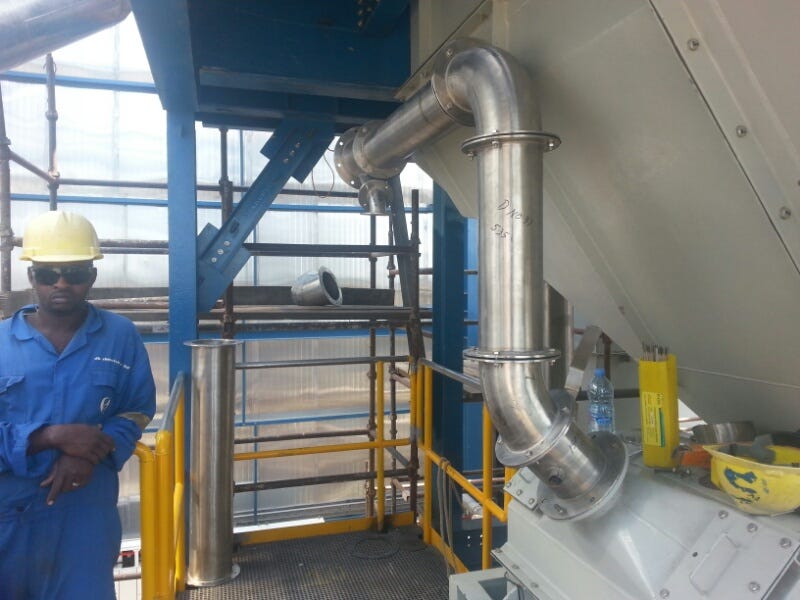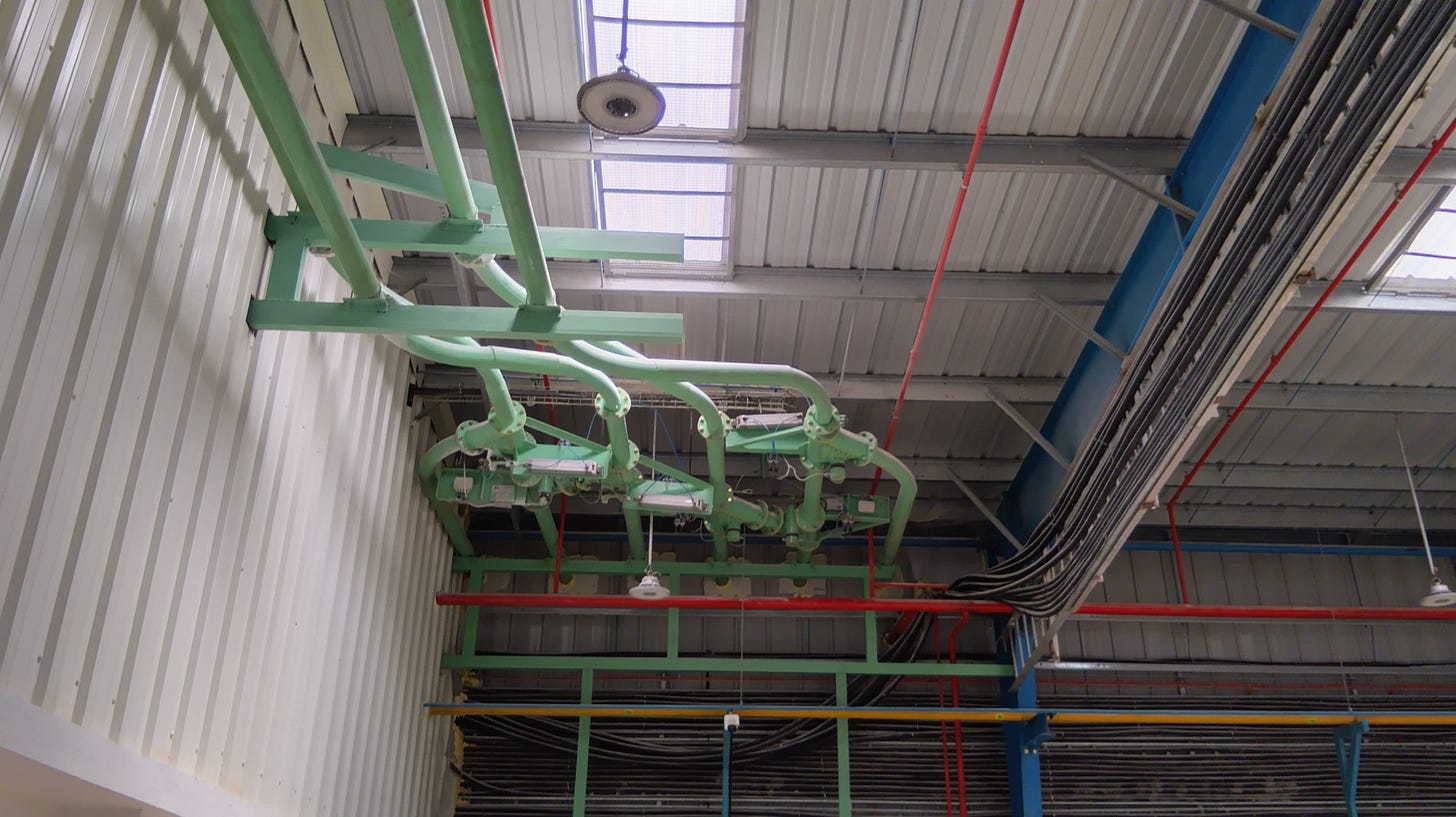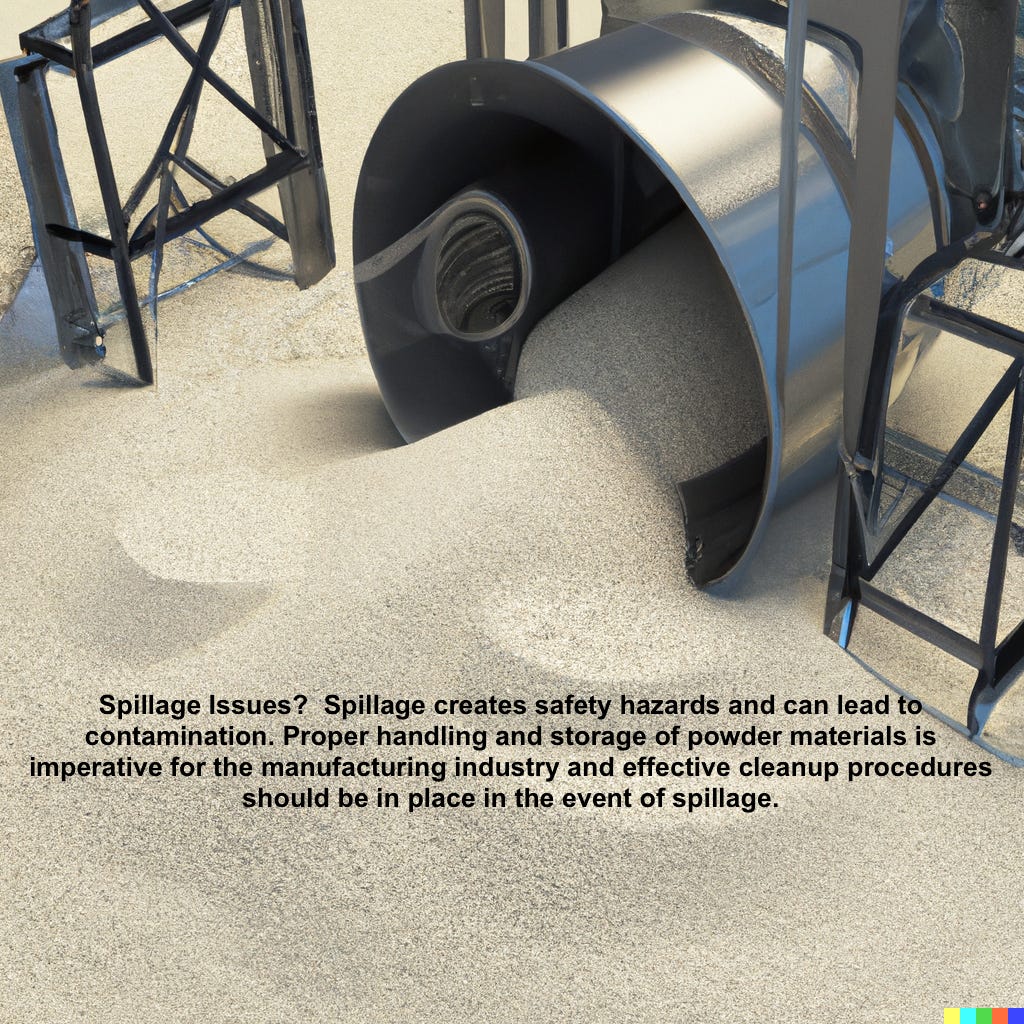Not Just the Colour: How to Make Your Pneumatic Conveying System Truly Green
That fresh coat of eco-green paint on your blower line might impress the branding team—but when it comes to truly sustainable pneumatic conveying, color is the least of your concerns.
Whether you’re designing a new powder handling system or retrofitting an old one, the truth is, most pneumatic systems are not inherently clean, efficient, or safe. But with the right design strategies, they can be.
Here are six high-impact ways to make your pneumatic conveying system not just green in color—but green in performance.
1. Material Matters: Is Your Powder Fighting the System?
Some powders—like soda ash, fly ash, and titanium dioxide—are abrasive, sticky, explosive, or all three.
🟢 Green Tip: Match your system to the powder—not the vendor's default catalog.
Abrasive powders wear down pipes and elbows, increasing waste and costs.
Sticky powders cause clogging and pressure loss, leading to energy inefficiency.
Fine or reactive powders can leak or combust if not properly handled.
👷♀️ Always request flowability tests and simulation-based system design to avoid energy waste and safety risks.
2. Shortest Route, Fewest Bends: Design for Flow, Not Fuss
Every extra bend, vertical lift, or long pipe run adds energy demand, pressure loss, and wear.
🟢 Green Tip: A clean layout is a green layout.
Fewer bends = lower pressure drop = smaller blower requirement = reduced carbon footprint.
Use swept bends to reduce particle attrition and dust creation.
A thoughtful layout simplifies inspection, maintenance, and cleaning.
🚫 Don’t let structural engineers dictate piping routes without involving your conveying system designer
.
3. Dust Control and Spillage: Visible Losses, Real Problems
Dust isn’t just a housekeeping issue—it’s an environmental and safety hazard.
🟢 Green Tip: Contain dust at every transfer point.
Seal silo-top filters properly using ATEX/NFPA-rated components.
Install inline receivers and dust traps to prevent atmospheric release.
Use anti-static linings to prevent buildup and spark risks.
Ensure your filters communicate with you: install broken bag detectors or dust analyses that will tell you when trouble is afoot.
😷 Even trace dust emissions can trigger audits and affect worker health.
4. Energy Efficiency: Oversizing Kills Sustainability
An oversized blower draws more power, produces more heat, and shortens system life.
🟢 Green Tip: Right-size the blower based on actual operating conditions.
Install Variable Frequency Drives (VFDs) to reduce power during low-load conditions.
Use dense phase conveying for suitable materials—it uses less air to move more powder.
Include idle modes to avoid energy waste during downtime.
📉 A right-sized, automated blower setup will cut energy costs by up to 30%.
5. Cleanability: Make Hygiene Easy, Not Optional
Sustainability isn’t just about energy—it’s also about clean operation and easy maintenance.
🟢 Green Tip: Design for fast, tool-free cleaning.
Use modular bends and quick-release couplings for easy disassembly.
Install drain points and clean-out doors in silos, filters, and elbows.
Even in non-food sectors, food-grade linings and gaskets can make frequent cleaning easier.
🧼 A clean system runs better, lasts longer, and protects your operators.
6. System Integration: Smarter Systems Are Safer and Greener
Automated monitoring isn’t just about convenience—it’s about proactive safety and energy savings.
🟢 Green Tip: Use sensors and digital controls to prevent downtime and waste.
Pressure sensors detect blockages early.
Temperature sensors prevent motor and bearing overheating.
Clog indicators notify maintenance teams before failures occur.
🧠 Integrate with SCADA or IIoT platforms for real-time analytics, compliance tracking, and remote diagnostics.
Final Thought: Green Is More Than Compliance
A truly green pneumatic conveying system is about more than ESG checkboxes. It's about:
✅ Using less energy per tonne conveyed
✅ Reducing dust emissions and contamination risks
✅ Completely safe and in compliance with environment, health and safety stipulations
✅ Designing for long-term efficiency and minimal downtime
Smart design today means lower costs and fewer headaches tomorrow. So next time someone says, “That’s a green conveying system,” ask:
Do they mean the paint—or the performance?
Frequently Asked Questions (FAQ)
1. What is a green pneumatic conveying system?
A system optimized for energy efficiency, dust containment, and minimal wear—reducing environmental impact without sacrificing performance.
2. How can I make my powder handling system more energy efficient?
Use right-sized blowers, VFDs, dense phase conveying, and minimize piping distance and bends.
3. Why is dust control important in pneumatic systems?
It protects worker health, prevents combustion hazards, and ensures regulatory compliance.
4. What role does layout play in sustainability?
A streamlined layout cuts energy use, reduces maintenance, and improves cleanability.
5. What materials work best with sticky or abrasive powders?
Use anti-static liners for sticky powders and abrasion-resistant components for rough materials. Design based on flow testing.
6. Can automation improve system sustainability?
Yes—smart sensors and SCADA integration enable early fault detection, efficiency optimization, and compliance tracking.
📞 Ready to Build a Truly Green Conveying System?
A green pneumatic conveying system isn’t just about compliance—it’s about smarter operation, longer system life, and lower operating costs.
Whether you’re upgrading an aging system or starting from scratch, our engineering experts can help you:
Reduce energy consumption by up to 30%
Minimize dust and emissions at every transfer point
Extend equipment life through optimized flow design
Improve operator safety and system cleanability
👉 Contact Us for a Green System Audit
👉 Request a Custom Design Consultation
Let’s design a conveying system that’s not just eco-friendly—but future-ready.






